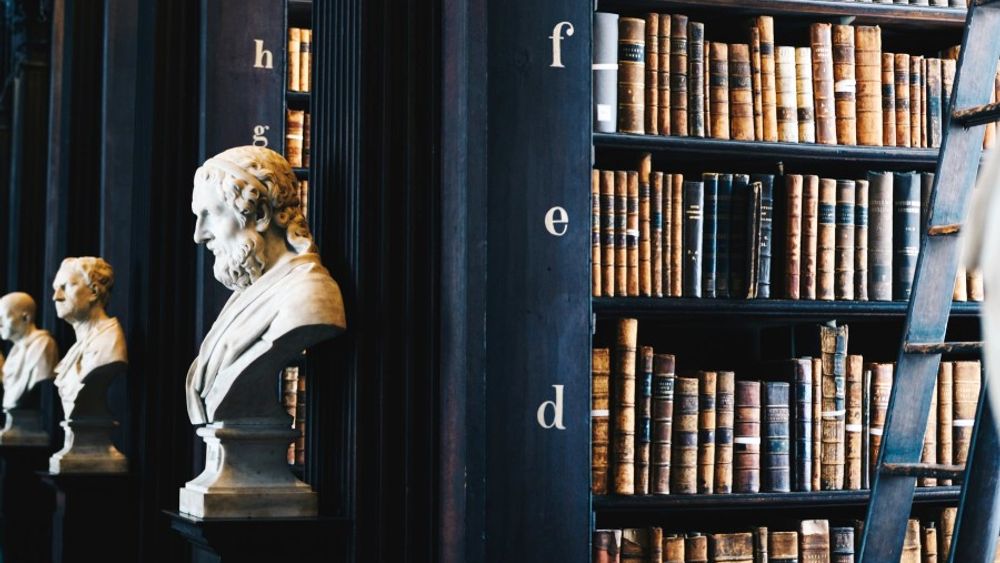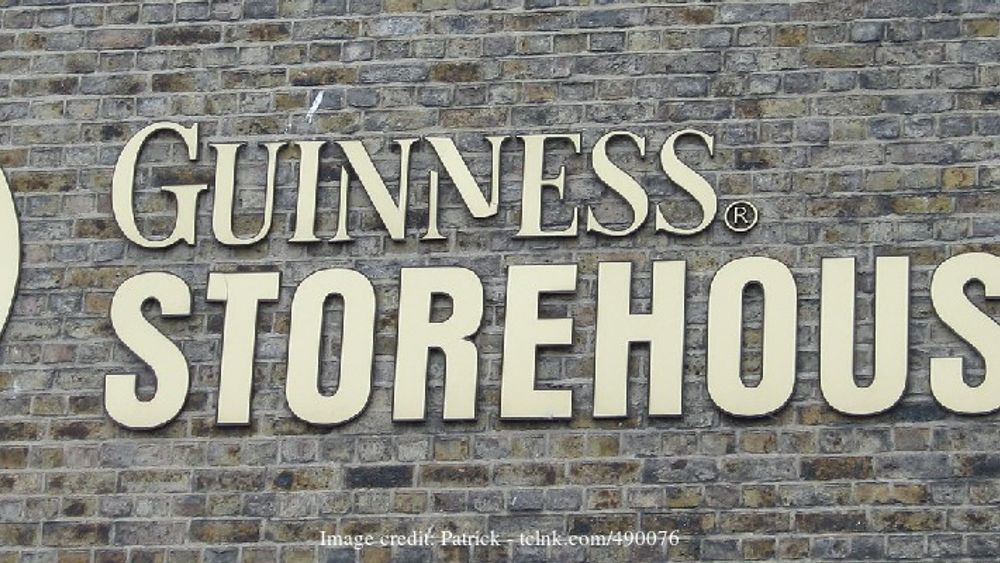Dublin in a Day: Book of Kells & Guinness Storehouse Private Tour
6 hours
From 10:00
Group 1+
6 hours
10:00
7
What you'll do
Explore the beautiful and historic city of Dublin, Ireland’s iconic capital situated on the sea and surrounded by mountains famous for its heritage, architecture and friendly atmosphere.On your private full-day tour, you will: Explore the beautiful and historic city of Dublin, Ireland’s iconic capital situated on the sea and surrounded by mountains famous for its heritage, architecture and friendly atmosphere. On your private full-day tour, you will: Explore the highlights and lesser-known gems of Dublin, a UNESCO city of literature;Admire the historic buildings and learn the stories and legends associated with them, including Christchurch the city’s impressive gothic cathedral and Dublin Castle dating back to the 13th century;See the Temple Bar a famous buzzing neighbourhood and also one of Dublin’s most famous pubs established in 1840 - renowned for serving 450 varieties of whiskey;Visit the picturesque 27-acre park St. Stephen's Green, formerly a marshy common used for grazing, witch burnings and public executions and now a popular place for Dubliners and visitors to relax from the hustle and bustle of city life;Visit the historic Trinity College University grounds and see the famed Book of Kells and the magnificent Trinity College Library;Learn about Dublin's rich and turbulent past, exemplified by the multitude of statues and architectural styles throughout the city;Stop in at the National Gallery of Ireland to see the Museum's most famed artwork: The Taking of Christ by Caravaggio.End your tour at the Guinness Storehouse, where black gold is created. Enjoy a full-day tour of Dublin, Ireland’s beautiful capital city, famous for its warm and friendly welcome, situated on a beautiful bay at the edge of the River Liffey and surrounded by spectacular mountainous countryside. Dublin’s picturesque cobbled streets are famed for their ‘craic’ (good fun) and are filled with vibrant art, markets, cafes and pubs, and historic buildings. Many famous historical figures have made Dublin their home, from beloved literary figures like W.B.Yeats, Oscar Wilde, (both of whom lived at Merrion Square,) Jonathan Swift, Samuel Beckett and James Joyce, to political and military figures like Arthur Wellesley, Duke of Wellington. Dublin has a varied concoction of history – dating back over 1000 years. You’ll learn about the Viking and Norman influences and you see the medieval churches and 13th Century Dublin Castle. You’ll learn about the Christian takeover of Celtic traditions and spirituality. And hear all about the long struggle for Irish independence from the British as you stand outside the spectacular parliament buildings. Enjoy strolling along the cobbled Temple Bar neighbourhood – with its lively atmosphere of live music and buskers – and stop inside the bar famous for serving over 450 types of whiskey! A real highlight of your tour of Dublin is to visit Trinity College – Ireland’s historic elite university and considered equivalent to Oxford and Cambridge in England – and its great library, home of the Book of Kells – and exquisite set of Gospels dating to circa 800 C.E. Your guide will also show you inside two of Dublin’s museums: the National Museum of Archaeology to see the famous Bog Man, a well-preserved Iron Age bog body found in June 2003, and the National Gallery to see Caravaggio’s painting The Taking of Christ.You’ll take a taxi to the Guinness Storehouse where your guide will leave you to enjoy the self-guided tour of this iconic brewery, where you’ll learn all about Ireland’s most famous beer – and enjoy views over the city as you enjoy a well-earned pint of it at the end of this fascinating day! Enjoy a full-day tour of Dublin, Ireland’s beautiful capital city, famous for its warm and friendly welcome, situated on a beautiful bay at the edge of the River Liffey and surrounded by spectacular mountainous countryside. Dublin’s picturesque cobbled streets are famed for their ‘craic’ (good fun) and are filled with vibrant art, markets, cafes and pubs, and historic buildings. Many famous historical figures have made Dublin their home, from beloved literary figures like W.B.Yeats, Oscar Wilde, (both of whom lived at Merrion Square,) Jonathan Swift, Samuel Beckett and James Joyce, to political and military figures like Arthur Wellesley, Duke of Wellington. Dublin has a varied concoction of history – dating back over 1000 years. You’ll learn about the Viking and Norman influences and you see the medieval churches and 13th Century Dublin Castle. You’ll learn about the Christian takeover of Celtic traditions and spirituality. And hear all about the long struggle for Irish independence from the British as you stand outside the spectacular parliament buildings. Enjoy strolling along the cobbled Temple Bar neighbourhood – with its lively atmosphere of live music and buskers – and stop inside the bar famous for serving over 450 types of whiskey! A real highlight of your tour of Dublin is to visit Trinity College – Ireland’s historic elite university and considered equivalent to Oxford and Cambridge in England – and its great library, home of the Book of Kells – and exquisite set of Gospels dating to circa 800 C.E. Your guide will also show you inside two of Dublin’s museums: the National Museum of Archaeology to see the famous Bog Man, a well-preserved Iron Age bog body found in June 2003, and the National Gallery to see Caravaggio’s painting The Taking of Christ. You’ll take a taxi to the Guinness Storehouse where your guide will leave you to enjoy the self-guided tour of this iconic brewery, where you’ll learn all about Ireland’s most famous beer – and enjoy views over the city as you enjoy a well-earned pint of it at the end of this fascinating day! Please note: external guides are not allowed to guide in Trinity College so you will join a shared guided tour at Trinity College Campus, Old Library and the Book of Kells. All books from the Long Room have been removed as part of the historic Old Library Redevelopment Project, except the first four bays as you enter the space. In the meanwhile your visitor experience will include a digital journey through the Old Library’s precious collections.All books from the Long Room have been removed as part of the historic Old Library Redevelopment Project, except the first four bays as you enter the space. In the meanwhile your visitor experience will include a digital journey through the Old Library’s precious collections.
What's Included
A friendly, professional English-speaking tour guide for your own private group
Trinity College campus and Book of Kells shared group tour admission tickets
Entrance to the Guinness Storehouse
What's not included
Hotel pick up and drop off
Food and drink
Gratuities
Meeting Points
In front of the Dublinia Museum (under the bridge), St Michaels Hill Christ Church, Merchants Quay, Dublin 8
Venue Information
Temple Bar
No trip to Dublin would be complete without a pint of Guinness, and the buzzing Temple Bar area is the perfect place to find one. Its cobbled streets, liberally hung with all manner of traditional Irish decorations, are home to a wide variety of quirky shops, stalls, and of course the numerous pubs and bars for which the area is renowned. While the district is perhaps not quite as authentic in its Irishness as its “cultural quarter” promotions might lead you to believe, there is no mistaking the spirit of the Emerald Isle which adds a unique twist to everything you pass.
A Colourful History
In the Middle Ages this area was little more than a suburb of Dublin, outside the city walls, and for three centuries it suffered badly at the hands of raiders. The 17th Century provided some rare respite for this historically troubled spot, as much of the land was converted into gardens for wealthy English families. After another hundred years, however, it had become Dublin’s centre for prostitution, and continued to experience decline and decay until the 1980s, when plans for a large new bus terminus drove down the area’s rent prices. This in turn caused an influx of young people, small businesses and galleries. The bus station scheme was eventually abandoned, and Temple Bar has thrived ever since.
Something for Everyone
Modern Temple Bar hums with an atmosphere driven by live music, good beer and delicious traditional food. The Oliver St. John Gogarty, The Porterhouse and The Auld Dubliner are some of the more famous spots, but there are plenty of lower-key hangouts if you are willing to explore a bit. Temple Bar Square hosts a book market every weekend, while the recently renovated Meetinghouse Square houses a weekly food market on Sundays.
Trinity College
Walking through the grounds of Ireland’s oldest university, it is easy to forget that you are in the middle of a modern capital city. Spread out over almost 50 acres, its wide-open grassy spaces and ancient quads provide a welcome break from the bustle of central Dublin and manage to combine a friendly, student-driven atmosphere with a strong sense of history. Elizabeth I founded Trinity in 1592 as part of an effort to prevent promising young Dubliners heading to Europe to pursue a university education. Since then, it has developed into one of the world’s most prestigious academic institutions, and can boast alumni such as Oscar Wilde, Francis Bacon and Jonathon Swift.
The Pages of History
Foremost among Trinity’s attractions is its library. A masterpiece of 17th century architecture, its original building would once have towered over the rest of the university. Even now, surrounded by building of comparable size, the old library dominates the view of the university from Nassau Street. Inside are housed no fewer five million books. The most famous of these is the Book of Kells, a 1200-year-old illuminated gospel manuscript widely regarded as one of Ireland’s finest historical artefacts. The old library also features the gorgeous Long Room, whose polished two-storey shelves stretch back a full 65m, interspersed with marble busts of historical figures associated with the university.
Bad luck of the Irish
Another of Trinity’s most important structures is the Campanile, a 30m belltower located in the centre of the university campus. Its size and form are impressive from any angle, but beware walking beneath it - legend has it that anyone passing under the tower when the bells begin to ring will be doomed to a lifetime of bad luck.
Dublin Castle
Dublin Castle is not quite what the name might lead you to expect. Though it does boast an impressive 800-year history, having been commissioned and built by King John of England in the early 13th Century, only the Record Tower now remains of the original stone structure, and it now feels more akin to an 18th Century stately home than a mighty medieval fortress.
England’s stronghold in Ireland
Nevertheless, the castle is certainly worth a visit, if only because its history is in many respects the history of Dublin itself. Its succession of significant historical episodes peaked a century ago during the fierce struggle for Irish independence, which was eventually secured, together with the keys to the castle, in 1922. You can walk through the room where James Connolly, the leader of the 1916 Easter Rising, was kept prisoner tied to a chair prior to his highly provocative execution. During the Anglo-Irish war for independence a few years later, three key IRA members were tortured and killed within the walls of the castle on the evening of that conflict’s “bloody Sunday”.
Visiting the castle today is thankfully not so harrowing. Its spacious grounds are perfect for a stroll on a sunny day, and there is a café to one side for those who want to rest their weary legs. Taking a tour will allow you to see St. Patrick’s Hall, where new Irish presidents are inaugurated. The highlight of your visit should be a trip down to the undercroft of the castle. Accidentally discovered in 1986, it is possible to see an ancient Viking foundation, as well as the remaining dribble of the River Poddle, which once supplied the moat.
Christ Church Cathedral
Located in the heart of medieval Dublin, the impressive Christ Church is one of the city’s two cathedrals dating from that period, boasting a history of nearly a thousand years. The original wooden structure was founded in around 1028, but the magnificent building we can see today was not put in place until shortly after the Anglo-Norman invasion of 1170. This initiative was spearheaded by “Strongbow”, otherwise known as Richard de Clare, Earl of Pembroke, whose tomb now occupies the Southern aisle. The original tomb was smashed when part of the nave’s roof collapsed in 1562, and a replacement tomb brought was in from Drogheda, meaning that the armoured figure you can see adorning the side is not in fact Strongbow himself, but more likely the Earl of Drogheda.
The Mummies in the Crypt
Beneath the nave lies the largest cathedral crypt in the British Isles. It dates from the original Viking church, and at 63m long, its arched roof and sheer size cannot fail to impress. One of its more curious features is the glass case containing “Tom and Jerry”, a church cat and mouse who died after becoming stuck in an organ pipe in the 1860s, and now lie mummified here in the crypt.
Ringing a Bell
High above in the belltower hang no less than 19 bells, a world record for bells rung in this way. It is thought that there has been at least bell here since the cathedral’s foundation, but their numbers only really started to grow when recasting was required after the enormous explosion of the Dublin Gunpowder Disaster in 1597, which cracked the bells and caused extensive damage to the city in general.
The Book of Kells
The Book of Kells is perhaps the finest historical artefact anywhere in Ireland. Created in roughly the year 800 by a tireless group of monks, it consists of 340 sheets of the highest quality vellum (prepared calf skin) on which are transcribed the four gospels, together with subsidiary texts and numerous elaborate illustrations.
The Emigration to Ireland
The origins of the book have been subject to considerable debate over the years, and there are at least five competing theories regarding its creation. Probably work on it started in a monastery on the small Scottish island of Iona. The issue then becomes confused because the location was plundered by Vikings in 806, leaving dozens dead, and after which the resident monks left for Kells in Ireland. How much of the text was finished by the time they moved is impossible to determine. Either way, it remained in Kells Abbey for centuries, miraculously escaping the repeated Viking raids on the Abbey, and eventually found its way to the Old Library of Trinity College, Dublin, where it has been on display since the mid-19th century.
Unprecedented Complexity
Looking at the illuminated manuscript today, you cannot help but feel a sense of awe at the intricacy and density of the illustrations and text. The calligraphy is extremely impressive, in the “insular majuscule” style, and appears to have been written by three different scribes. There are ten full-page images of then-unprecedented complexity, including one of the Temptation of Christ and another of the Arrest of Jesus. They all employ a far wider range of colours than was typical at the time, and the Book of Kells’ imagery is particularly noted for its combination of minute detail and bolder, larger-scale compositions. For anyone interested in history, this is not to be missed.
Guinness Storehouse
There are few things more definitively Irish than a perfectly poured pint of Guinness. In an increasingly lager-dominated world, where many people haven’t even heard of “stout”, you would be hard pushed to find someone who isn’t familiar with Guinness. The Guinness Storehouse will tell you all you need to know about the history, production and success of this global phenomenon.
Brewing Fame and Bottling Glory
The Storehouse is situated next to the St. James’ Gate Brewery. Experienced brewers have been creating Guinness here since 1759, and the plan is to keep doing so for some time yet – Arthur Guinness famously signed a 9,000 year lease for the site. Covering a full seven floors, the Storehouse is laid out on its different levels around an enormous central Guinness pint glass (capacity - 14.3 million pints of the stuff). The ground floor deals with the basics – the four key ingredients and Arthur himself – and as you ascend through the building you will learn about the brewing processes, cooperage, transportation, advertising, and considerably more. You can enter the multisensory tasting room, receive an education in pouring the perfect pint, and familiarize yourself with the four most popular Guinness variants.
The Head of the Pint
Emerging onto the seventh floor, you will find yourself in the Gravity Bar, where you will receive a complimentary pint of Guinness included in the price of your ticket. Here you can put your newfound connoisseurship to the test while enjoying some spectacular views of Dublin from the 360° panoramic windows. An experience not to be missed.
St Stephen's Green
Maintained in its original Victorian design, St Stephen's Green is a park beloved by locals.
Trinity College Library
Gallery


Cancellation policy
A full refund will apply if you cancel more than 48 hours before the activity start time.
No refund is possible if you cancel less than 48 hours before the activity start time.
Get inspired by a world of food
Carefully curated guides, reviews and inspiration by our team of food travellers and critics.




